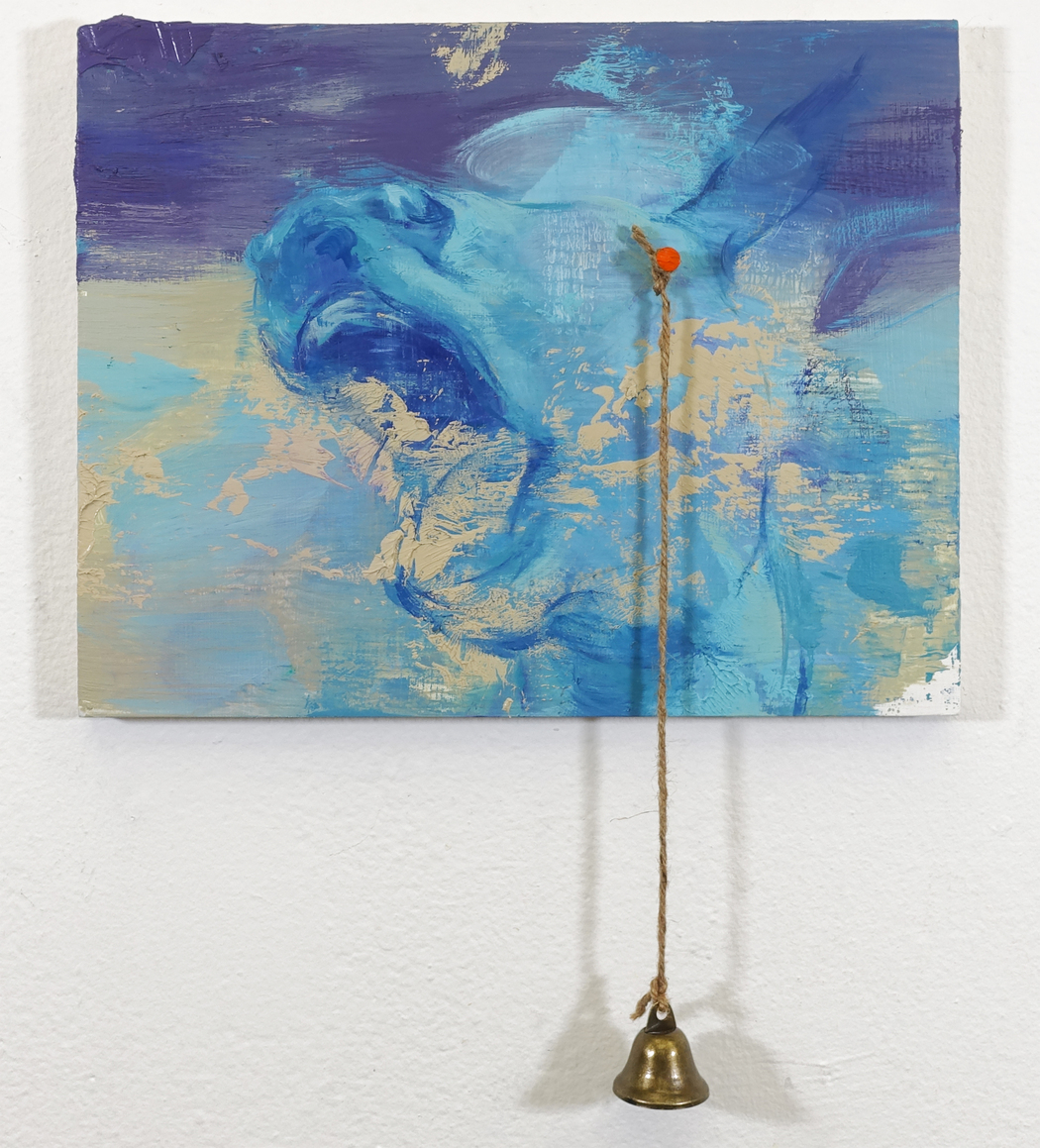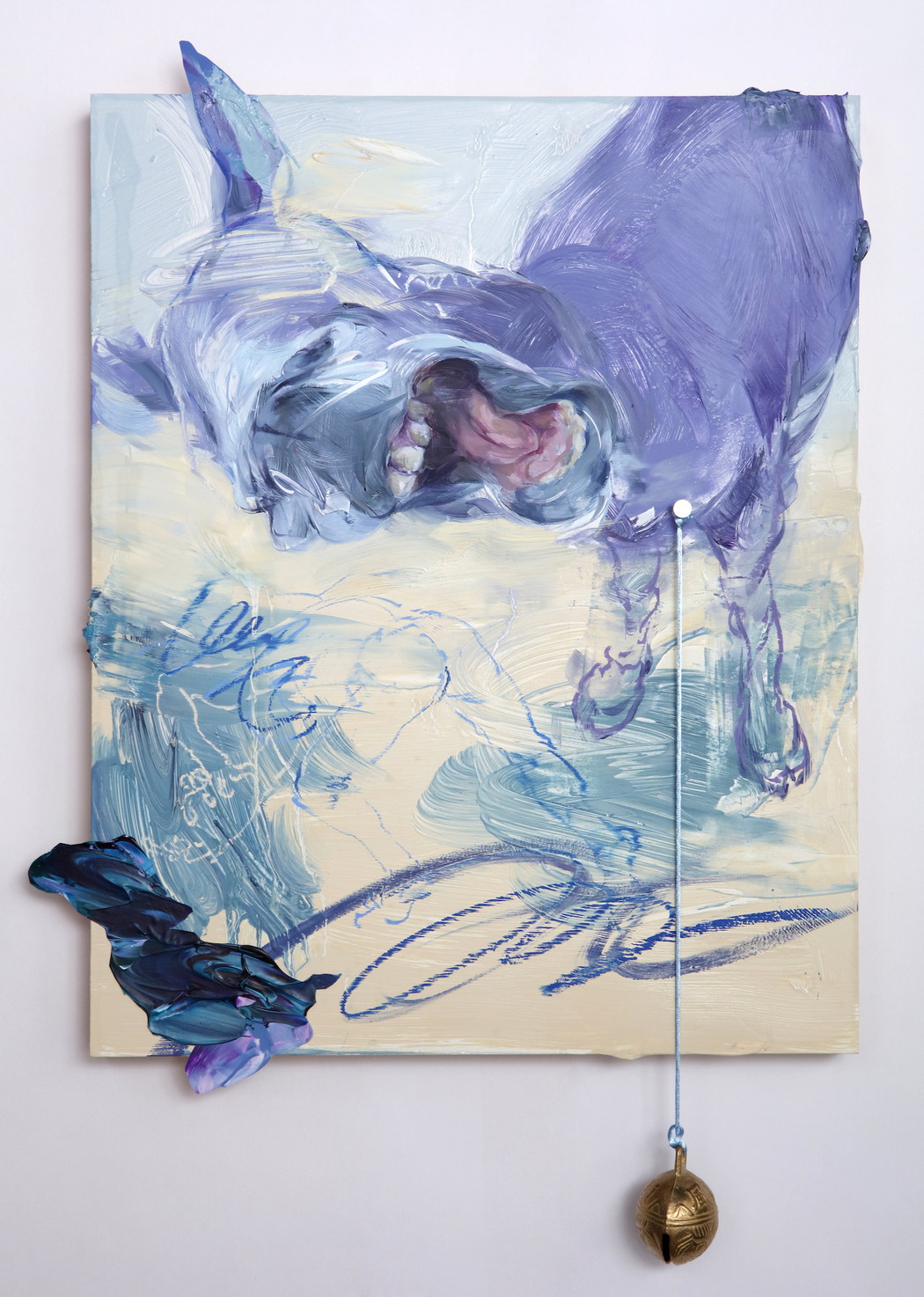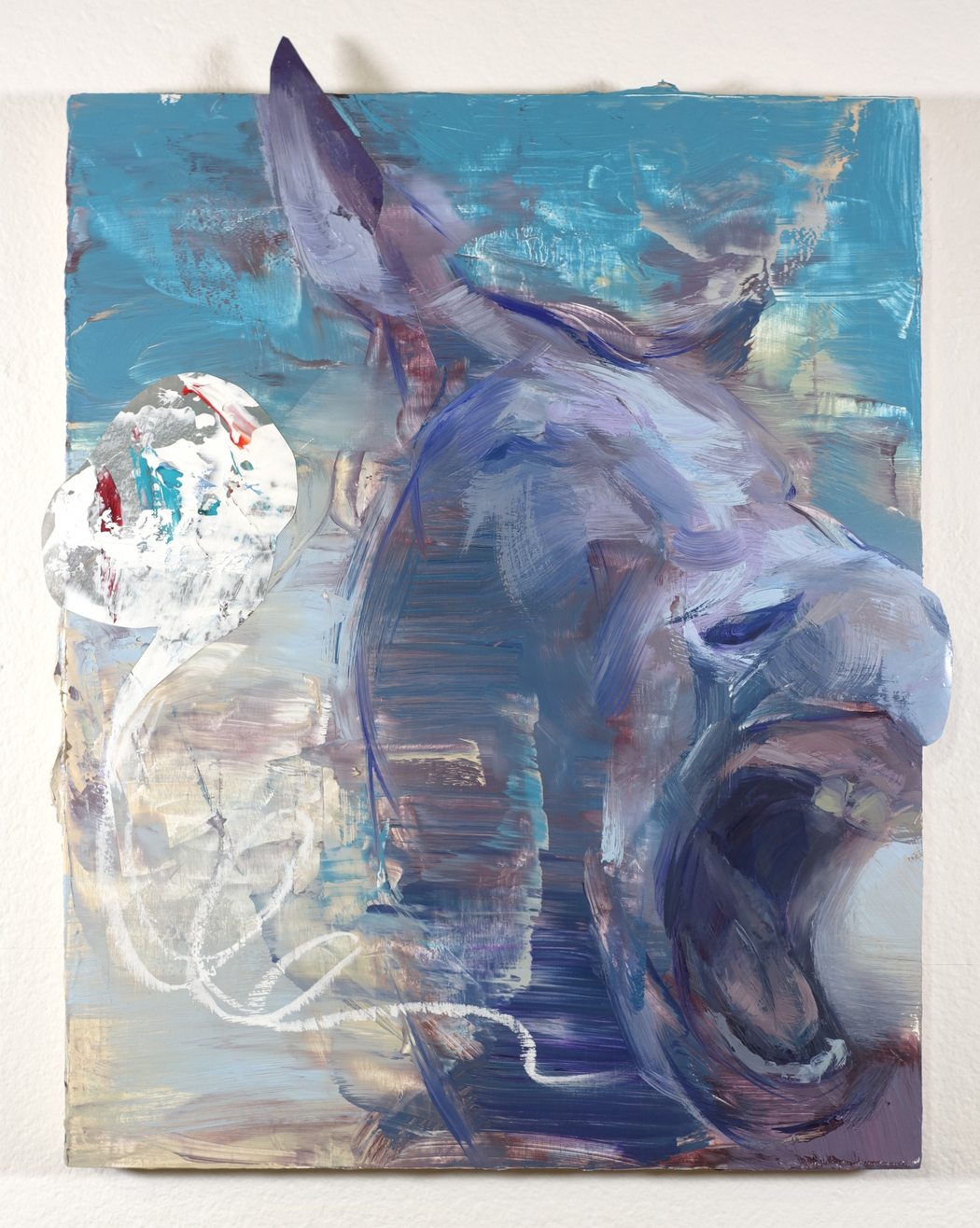Ruoyu Gong
Year of birth: 1999.
Where do you live: I currently reside in New Jersey, USA.
Your education: I am currently pursuing my MFA in painting at the New York Academy of Art. I earned my BFA with honors in Illustration from the Rhode Island School of Design in 2023. In 2021, I received the certificate of Advanced Painting Seminar at the Central Academy of Fine Arts in Beijing, China.
Describe your art in three words: Theatrical, ironic, symbolic.
Your discipline: I am primarily a painter working with oil. I also create work with sculpture materials and ready-made objects. On top of that, I have a practice in monotype printmaking.
Website | Instagram
Your paintings seem to explore deep psychological landscapes. How do you approach translating complex internal experiences into visual art?
To tap into the unconscious of my psyche, I keep the urge of illustrating an idea at arm’s length. Instead, I let the work develop in its own course. When facing a blank canvas, I don’t premeditate what I want to paint in fear of relegating to formulaic rendering of semiotics. Rather, I play with different surfaces, collaging with different materials, or even daydreaming for ten minutes. This helps me enter a mental state that remains hidden in daily life. I visualize recurring motifs that hover on the edge of entropy. Instead of creating utter chaos, these motifs serve to elucidate a reality that lies just below the surface of my unconscious psyche.
You’ve mentioned that your work is inspired by monotype printmaking. How does this influence the fluidity and spontaneity seen in your oil paintings?
I make monotypes with acrylic paints. The fast-drying quality medium forces me to work quickly, resulting in a fluid, expressionistic aesthetic. In my oil painting, I keep a similar sensitivity in mind and boldly work with oil as if it dries fast. This method of painting allows me to lean into surprises and accidents. In addition, I achieve highlights in my monotypes through scraping, leaving the white of the paper see-through. Utilizing this subtractive method, I disrupt the opacity of the oil paint layer with a translucent ground layer to enhance spatial complexity.
 Ruoyu Gong | Mr. Donkey Messed Up | 2024
Ruoyu Gong | Mr. Donkey Messed Up | 2024
In your project statement, you discuss the tension between control and serendipity. Could you elaborate on how you balance these forces during the creation of your pieces?
I am captivated by gaining and relinquishing control over the medium of oil paint. I often think of the Nietzschean notion of Apollonian and Dionysian forces in artistic creation, where the former embodies reason and clarity, while the latter embodies instinct and passion. My working process is a manifestation of a wrestle between these two opposing forces. In the first stage of my painting process, formal elements such as form, value, and composition are arranged by unforeseen impulses. To me, this approach is like a visual sequence of slips of the tongue. As representational narratives begin to emerge, I continue to develop them through detailed studies and iterations, resulting in a final painting in which the inherent tension between control and serendipity is never fully resolved.
The use of Chinese cultural references and the comedic tradition of Xiangsheng seems important in your work. How do you incorporate this into your oil painting medium?
My paintings frequently employ the symbolic language of Xiangsheng, traditional Chinese comedy, which often features two performers engaging in humorous dialogue. I am interested in revealing a sense of irony in my work that echoes certain innuendos in Xiangsheng performances. Some Xiangsheng plots revolve around classic stories, which inspire the narratives in my paintings. However, as I paint, the initial narrative might transform into something completely independent of the original Xiangsheng plot.
 Ruoyu Gong | Mr. Donkey at Work | 2024
Ruoyu Gong | Mr. Donkey at Work | 2024
Your works convey a complex emotional narrative. Do you consider humor to be an essential tool in expressing the depth of your feelings and the paradoxes of identity?
Humor plays an integral role in my artistic practice. To me, humor mediates opposing forces, allowing us to understand ourselves and others in a refreshed light. Since I derive much inspiration from traditional Chinese comedy, humor always reflects my cultural identity. Many would assume that humor manifests as funny imagery that induces laughter. But to me, humor can manifest in the working process by allowing myself to play without a prize or punishment. This ability to play allows me to experience the full depth of my emotion because I am able to stay completely present.
As someone who has navigated different cultural identities, how does your experience of cultural alienation influence the themes and symbols in your work?
I consider my study at Central Academy of Fine Arts in Beijing during Covid to be a pivotal point for the theme I explore. Since I was fourteen, I did not get to spend a long period of time in China. So I spent that year at CAFA reexamining my role as a contemporary Chinese painter. In the past, I have been predominantly influenced by Western old masters such as Michelangelo, Caravaggio, and Rubens. My training was centered around representational figurative art, which emphasizes anatomical accuracy, color harmony, spatial clarity, etc. In more recent years, I endeavored to deviate my art from the classical Western canon. I started to imbue the Western medium of oil paint with Chinese cultural relevance formally and conceptually because I came to realize that my cultural root is the foundation for my personal and professional journey.
 Ruoyu Gong | Mr. Donkey’s Daydream | 2024
Ruoyu Gong | Mr. Donkey’s Daydream | 2024
You often depict your figures in absurd or improbable situations. What role does absurdity play in communicating the struggles of personal and cultural identity?
I see absurdity as the cousin of irony. Irony is a kind of humor that reconciles oppositions of semiotics. Absurdity, on the other hand, is the juxtaposition of incongruent semiotics which appears bewildering as opposed to humorous. I think most people can agree that life is as absurd as it is. To me specifically, absurdity echoes the state in which I navigate the discordance of cultural hierarchy in a foreign land. Sometimes, opposing moral values and political systems put me in a state of confusion and paralysis. I translate this sense of powerlessness by placing the figures in improbable situations. In a way, I project my psychological distress upon the figures I create. Ultimately, when I paint them, I simultaneously become them.


Leave a Reply